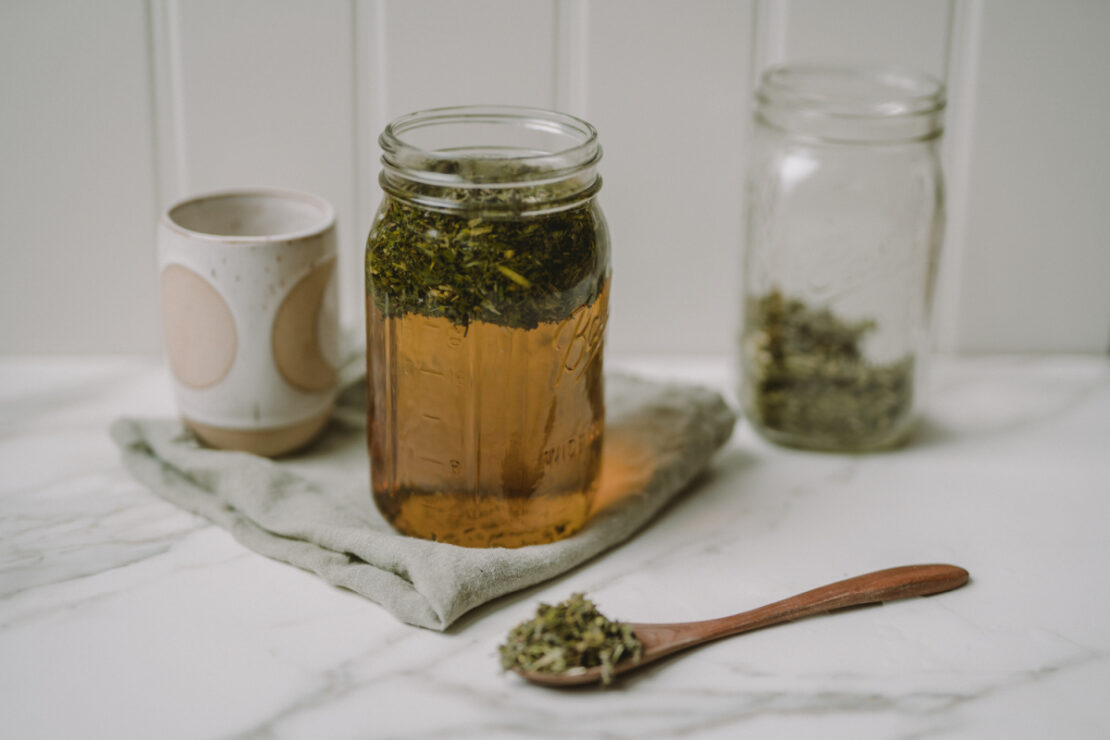
How to Make a Nutritive Pregnancy Tea Blend
Pregnancy is a really special time of life and so are the needs during this time. Besides a wholesome, colorful diet, and prenatal supplements, a nourishing herbal pregnancy tea blend can boost your wellbeing as well as the health and development of your baby.
The nutrient requirements are heightened to properly nourish the body during this changing stage, and of course, also for the growing miracle inside.
In this article, you will find some of the best herbs to enjoy during pregnancy and a highly nourishing pregnancy tea recipe, plus some safety guidelines on using herbs during this precious time.
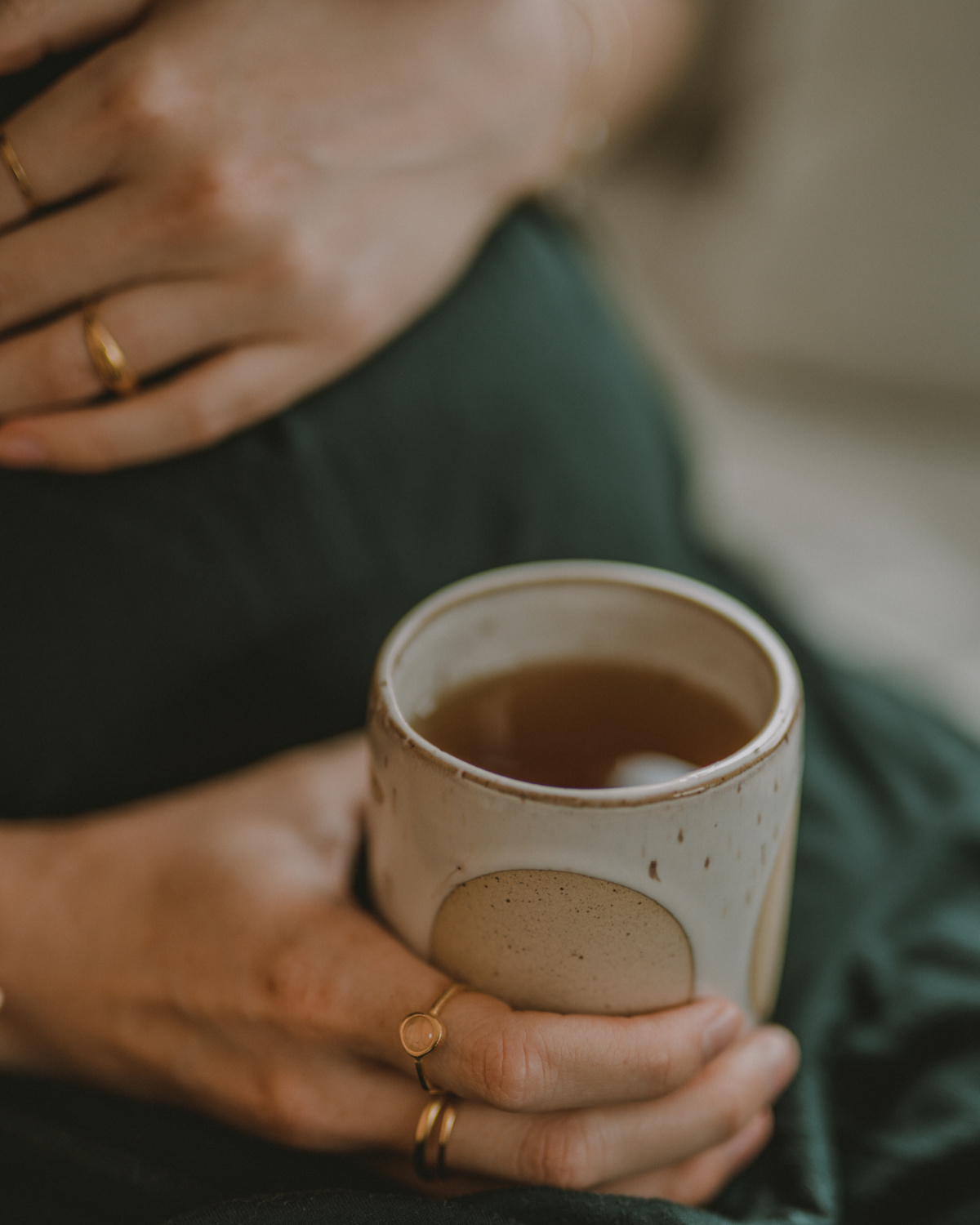
Herbal Safety During Pregnancy
While the use of herbs in pregnancy may be gentler and safer than regular pharmaceuticals, little is known about the potential risks, as there are not many clinical investigations so far.
Overall, many herbs have a high safety profile and a long historical track record.
To err on the side of safety, a general recommendation is to completely avoid herbs during the first trimester of pregnancy, unless medically indicated (i.e., nausea, threatened miscarriage…) and then for the second and third trimester, using moderate amounts of herbs that are known scientifically or historically to be safe during pregnancy. Examples include: chamomile (Matricaria chamomilla), echinacea (Echinacea angustifolia), lemon balm (Melissa officinalis), nettles (Urtica dioica), red raspberry leaf (Rubus idaeus), rose hips (Rosa spp.), and spearmint (Mentha spicata) (Romm, 2014).
On the other hand, there are numerous herbs that should not be used at all.
These are, for example, herbs that contain strong alkaloids or laxative actions, as well as emmenagogues—herbs that stimulate menstrual flow and that often have a strong hormonal activity.
During pregnancy, you should always consult a midwife and/or professional herbalist when using herbs, especially when it comes to the dosage of long-term use.
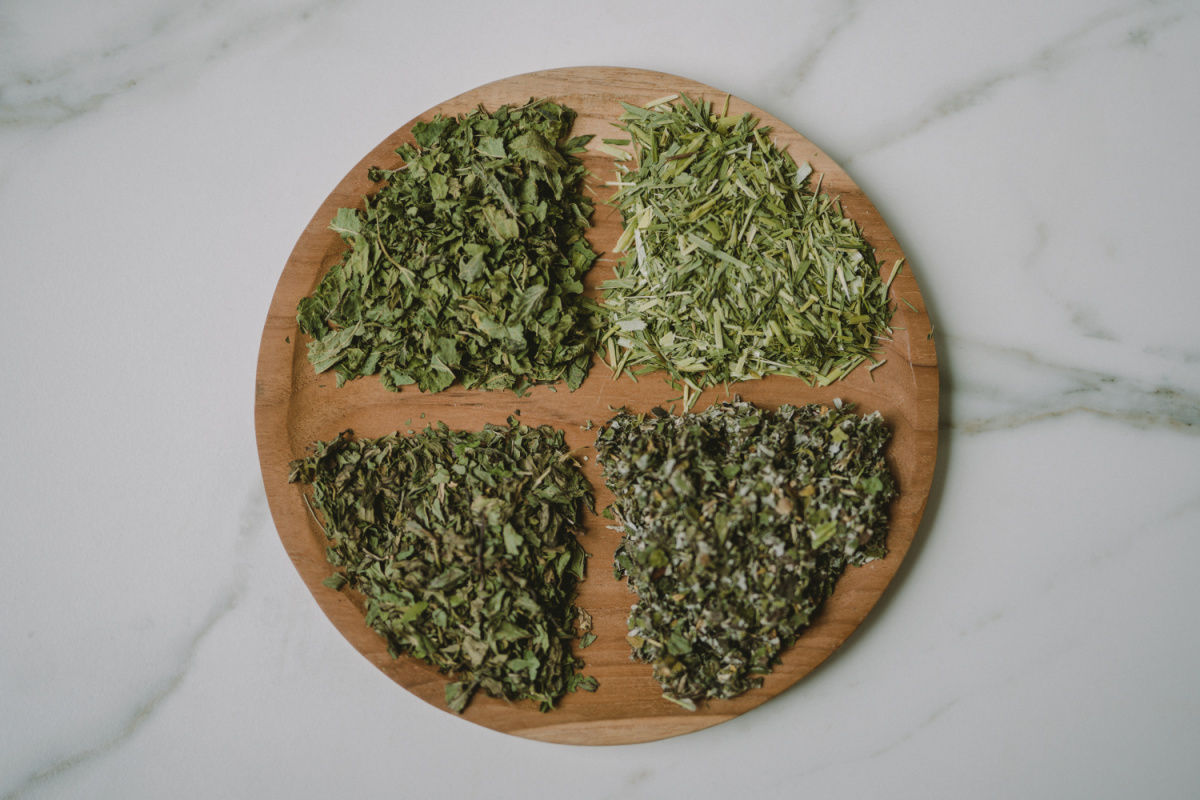
The Best Herbs for a Nourishing Pregnancy Tea Blend
The following herbs have been shown to be really beneficial for pregnancy for ages. Making a pregnancy tea or infusion with these is a great way to embrace their nutrients and effects.
Raspberry Leaf (Rubus idaeus)
Using raspberry leaf during pregnancy was originally introduced by Indigenous peoples of North America (Wood, 2009). Today, raspberry leaf is still one of the most commonly used herbs for this special time (Tobyn et al., 2016).
It is considered an excellent tonic during pregnancy on two counts: first, its high vitamin and mineral content is richly nutritious. It is a rich source of vitamins A, B, C, and E, and minerals such as calcium, iron, phosphorus, potassium, magnesium, selenium, and manganese (Gladstar, 1993; Pederson, 2010).
Secondly, raspberry leaf’s tonic properties help to strengthen the uterus in preparation for childbirth (Gladstar, 1993). Furthermore, is also used to quell morning sickness and reduce the risk of miscarriage (Wood, 2009). Raspberry leaf is used as a parturient to facilitate easier labor (Hoffmann, 2003) and reduce the risk of excessive bleeding after birth (Romm, 2018).
Following birth, a raspberry leaf infusion is used as a uterine tonic to help expel the placenta (Gladstar, 1993), restore the elasticity of the womb and uterine ligaments, and as a galactagogue to increase the flow of breastmilk (Berger, 1998).
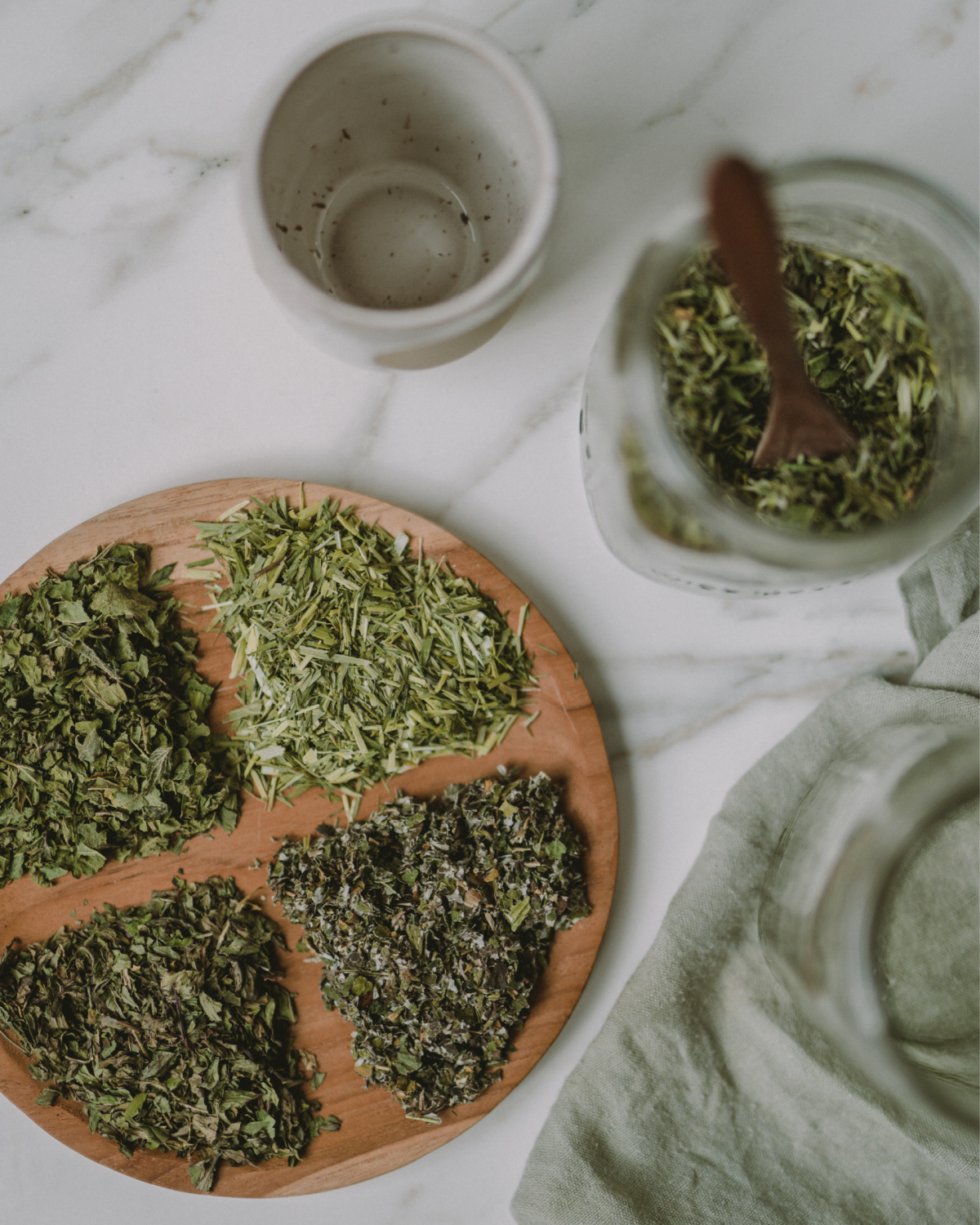
Nettle (Urtica dioica)
Nettle is a quintessential nourishing herbal tonic, and can be drunk or eaten daily. It nourishes, supports, and energizes the whole body, and is richly nourishing to the blood.
The rich nutrition can soothe fatigue and is an energizing afternoon (or anytime) pick-me-up if you’re feeling tired during pregnancy. Nettle has the added benefit of helping to maintain even blood sugar levels—research indicates that nettle contains both hypoglycemic and hyperglycemic constituents (Hoffmann, 2003).
In addition, it can ease urinary discomfort and is tonic and strengthening to the kidneys, improving overall vitality, which may be helpful for pregnant individuals who are prone to infections in the urinary tract (Holmes, 1997).
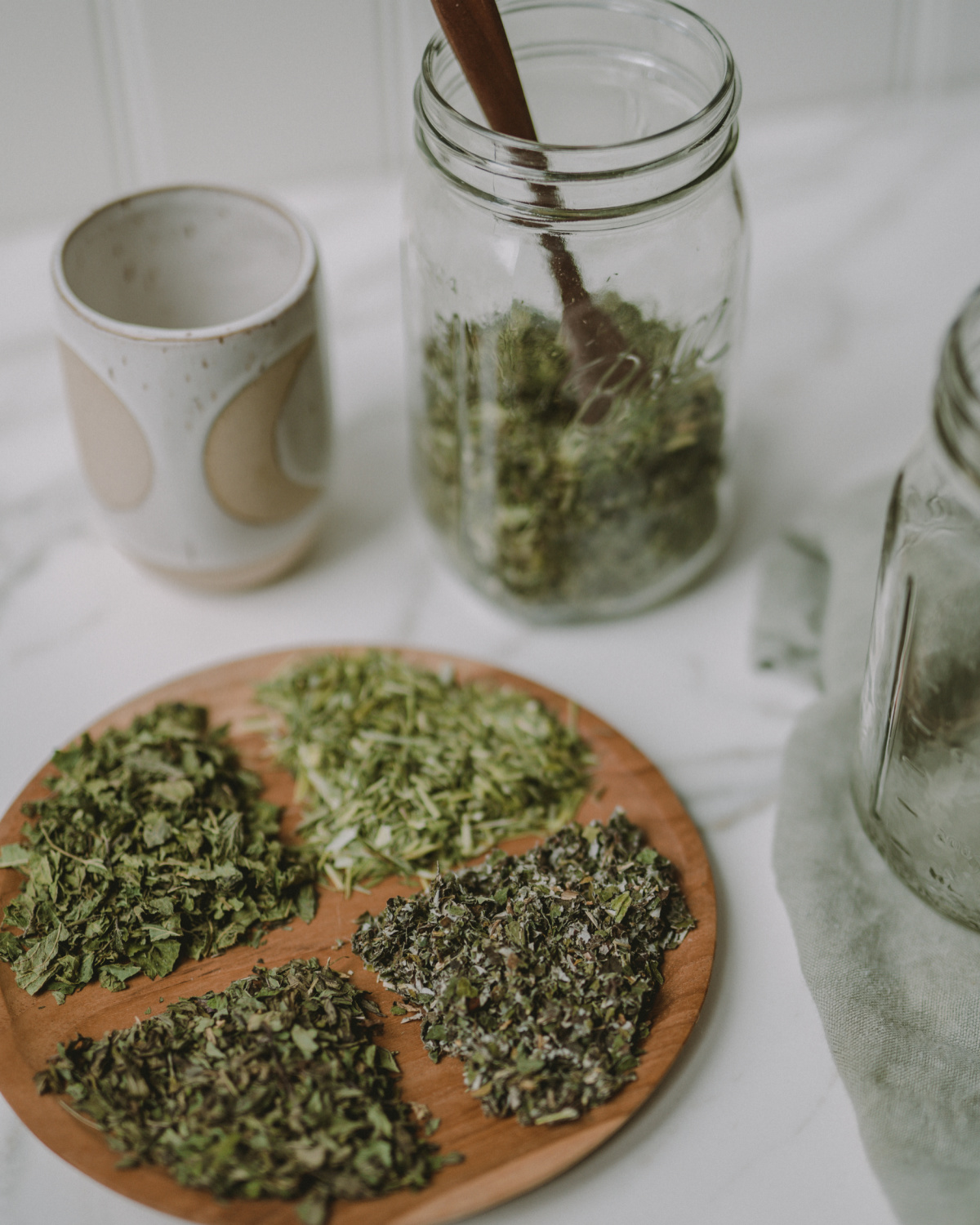
Oatstraw (Avena sativa)
Just like the other two herbs, the milky oat straw is rich in minerals and trace nutrients including silica, magnesium, phosphorus, chromium, iron, calcium, protein, the vitamin B complex, and vitamins A, C, E, and K (Holmes, 1997; Berger, 1998; Edwards, 2000). Specifically, the rich vitamin B, calcium, and magnesium content in oats helps soothe and strengthen nerves. It’s considered one of the best plant allies for “feeding” and restoring the nervous system, particularly in times of stress and in the case of nervous system weakness or mental exhaustion (Hoffmann, 2003).
Spearmint (Mentha spicata)
Spearmint is perhaps best known for its ability to soothe the stomach, which is often much needed in pregnancy; it is an excellent choice for gently easing gas and bloating (Cook, 1869; Frawley & Lad, 1988). Spearmint can be used to relax muscles in the gastrointestinal tract or to ease nausea and vomiting (Bove, 2001; Cook, 1869). It is also commonly included in nourishing mineral-rich teas, and the taste combines very well with the other herbs named above.
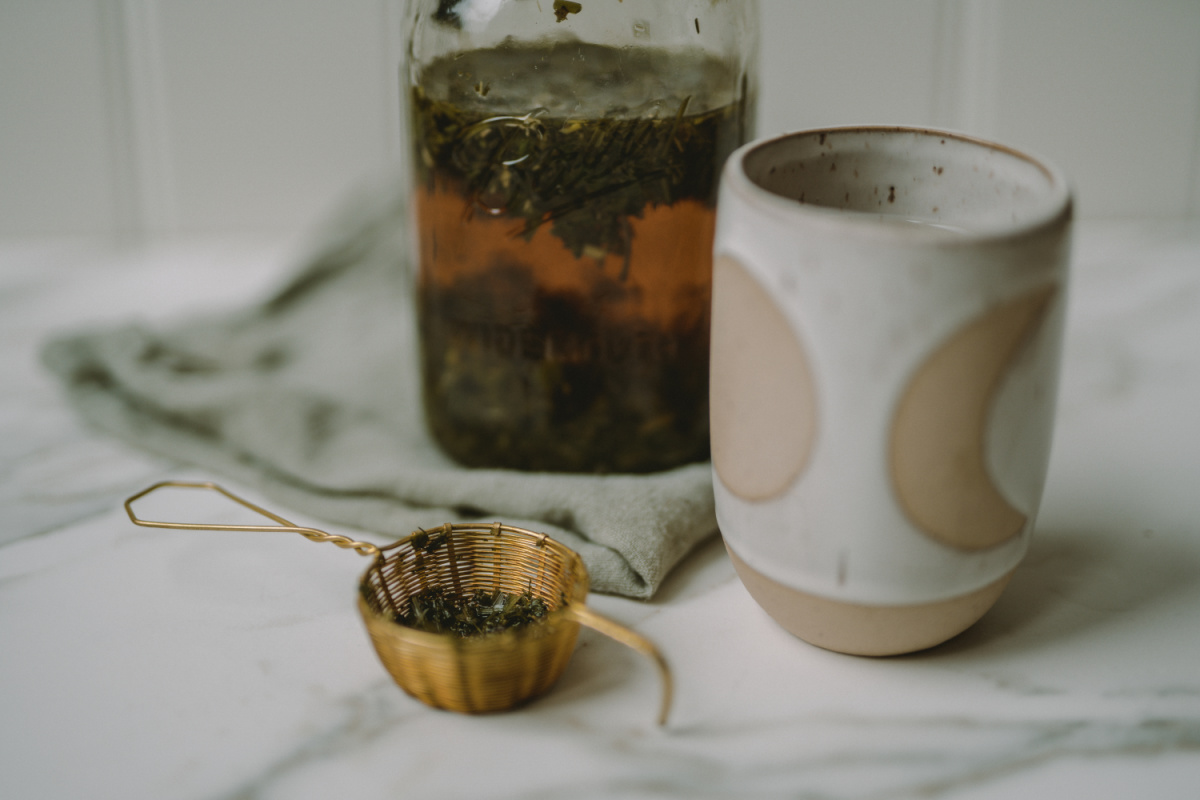
Nutritive Pregnancy Tea Recipe
This herbal pregnancy tea blend is a wonderful way to boost your intake of iron, calcium, and many vitamins and other trace minerals, keeping you nourished throughout this special time. This pregnancy tea also aids as a birth preparation brew.
2 cups red raspberry Leaf (Rubus idaeus)Nourishing Pregnancy Tea Recipe
2 cups nettle leaf (Urtica dioica)
1 cup oatstraw (Avena sativa)
¼ cup spearmint leaf (Mentha spicata)
To Use
This beverage can be enjoyed both hot and cold and is not only a wonderful nourishment for pregnancy, but also for the whole family! Also, it’s really delicious as a base for an herbal lemonade, combined with fresh lemon juice, which also helps to boost iron absorption.
Safety
It is safe to drink up to 4 cups of this tea blend daily throughout the second and third trimester of pregnancy, as well as during labor. Using herbal preparations in the first trimester of pregnancy should be avoided or only applied with the help of your doctor, midwife, and/ or professional herbalist.
In Closing,
Some herbs are wonderful, nourishing supports during pregnancy. Combined with a good diet and nutrition, exercise, and a holistic healthy lifestyle, including a positive mindset and social support, we can build the cornerstones of an optimal childbearing experience. Have this tea for some quality me-time during your pregnancy or create this mixture for others! They will appreciate it for sure!
For more posts on pregnancy, see:
Safe Essential Oils For Pregnancy
Is Red Clover Safe During Pregnancy and Breastfeeding?
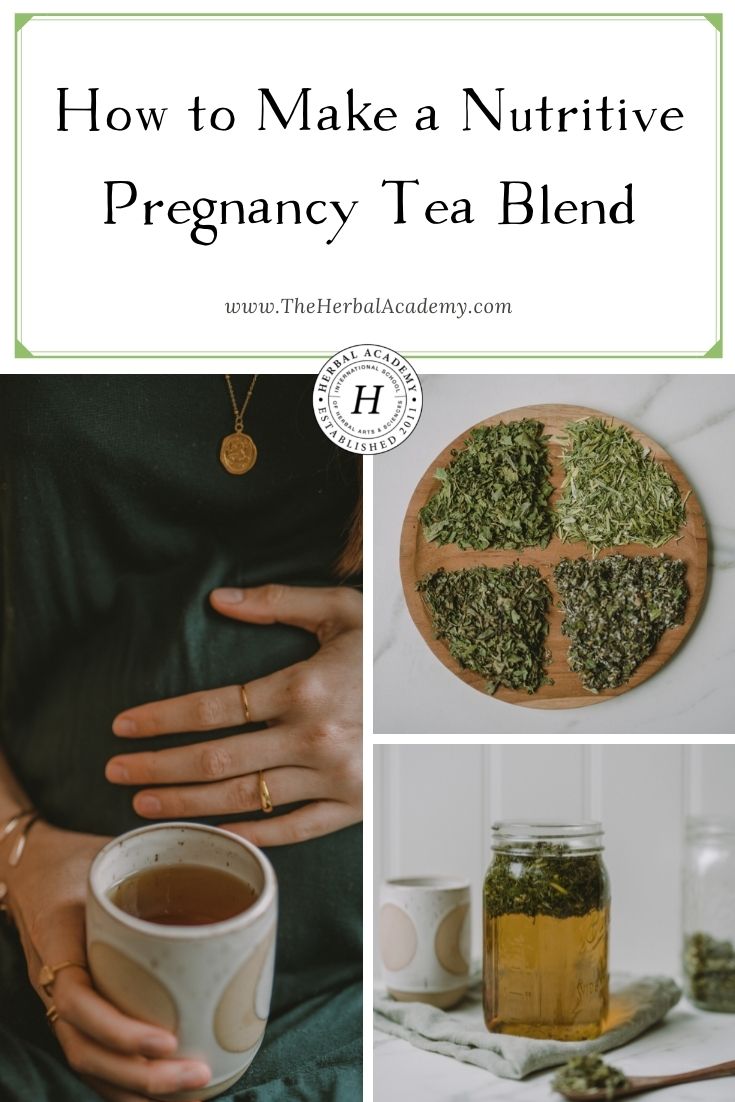
REFERENCES
Berger, J.L. (1998). Herbal rituals. New York, NY: St. Martin’s Press.
Bove, M. (2001). An encyclopedia of natural healing for children and infants (2nd ed.). Chicago, IL: Keats Publishing.
Cook, W.M. (1869). The Physiomedicalist’s dispensatory. Cincinnati, OH: WM. H. Cook. Retrieved from http://medherb.com/cook/cook.pdf
Edwards, G.F. (2000). Opening our wild hearts to the healing herbs. Woodstock, NY: Ash Tree Publishing.
Frawley, D., & Lad, V. (1988). The yoga of herbs. Santa Fe, NM: Lotus Press.
Gladstar, R. (1993). Herbal healing for women. New York, NY: Fireside.
Hoffmann, D. (2003). Medical herbalism: The science and practice of herbal medicine. Rochester, VT: Healing Arts Press.
Holmes, P. (1997). The energetics of Western herbs (Vol. 1, 3rd ed.). Boulder, CO: Snow Lotus Press.
Pedersen, M. (2010). Nutritional herbology: A reference guide to herbs. Warsaw, IN: Whitman Publications.
Romm, A. (2014). The natural pregnancy book: A complete guide to a safe, organic pregnancy and childbirth with herbs, nutrition and other holistic choices, NY: Ten Speed Press
Romm, A. (2018). Botanical medicine for women’s health (2nd ed.). St. Louis, MO: Elsevier.
Tobyn, G., Denham, A., & Whitelegg, M. (2016). The Western herbal tradition: 2000 years of medicinal plant knowledge. Philadelphia, PA: Singing Dragon.
Wood, M. (2009). The earthwise herbal: A complete guide to New World medicinal plants. Berkeley, CA: North Atlantic Books.









